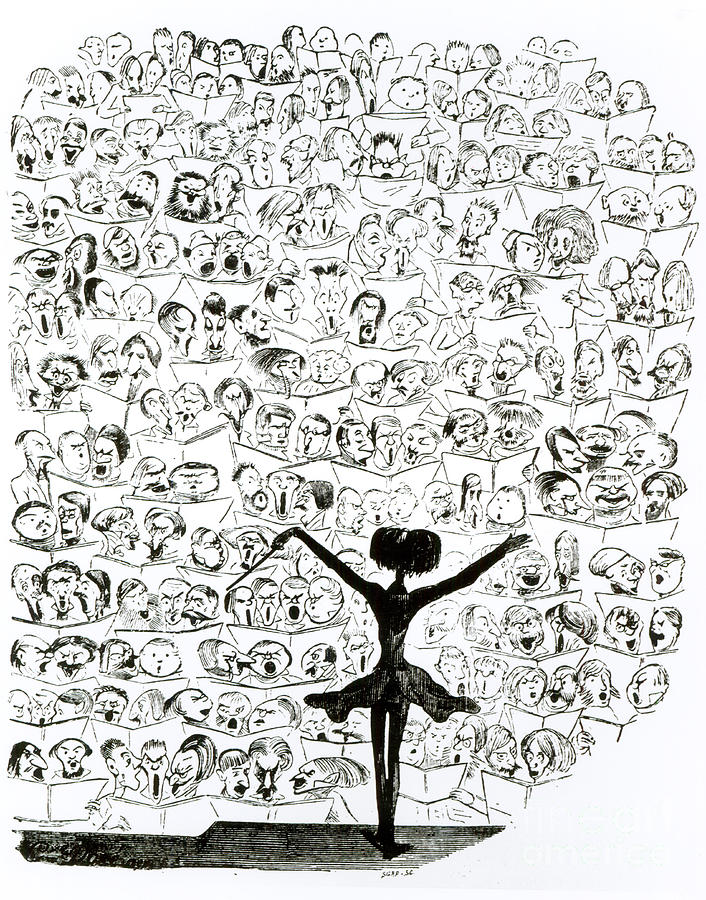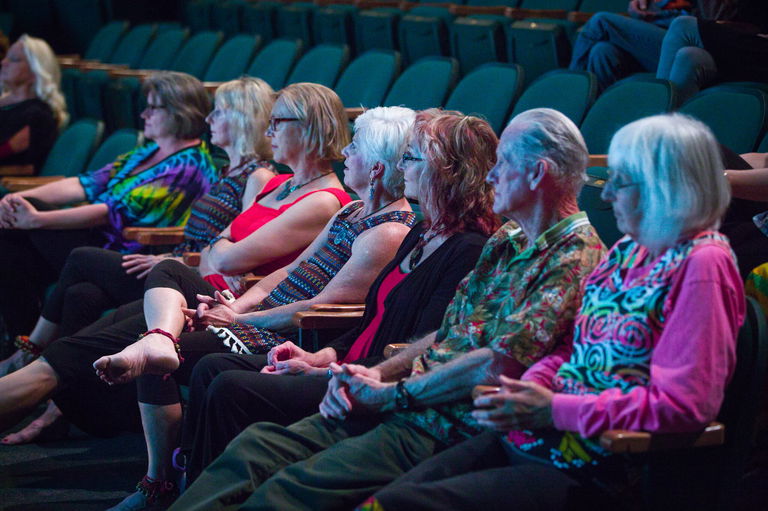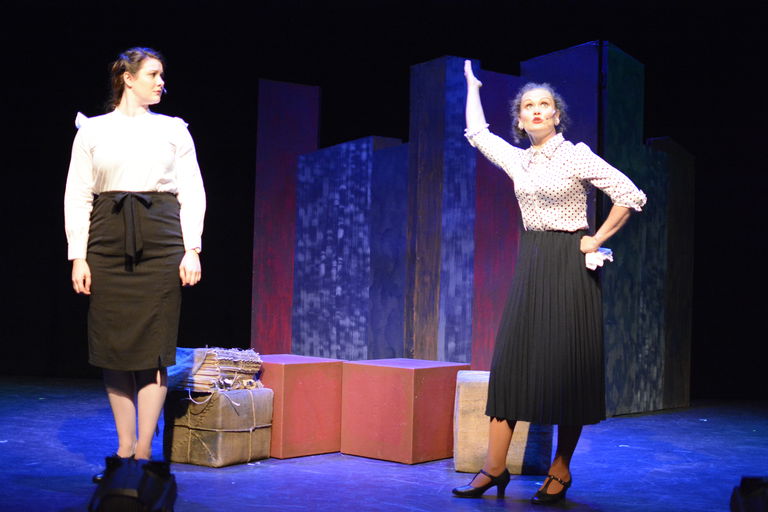
What We Know (and Don't Know) About Canadian Arts Audiences
Shannon Litzenberger
Dec 9, 2013
published on: 09/12/2013

It seems like an understatement to say that the ways in which people are engaging in the arts is changing. New technologies have significantly democratized cultural engagement, allowing audiences to not only consume, support and participate, but also to curate, design and create unique and personalized artistic experiences. This culture of participation and personal creative expression is growing rapidly, causing professional artists and arts organizations to rethink how they are attracting and retaining audiences. Relating and connecting meaningfully with audiences, communities and stakeholders are essential to the survival and vitality of the arts. However, the audience development activities that we are familiar with, such as savvy marketing strategies, social medial campaigns, or education and outreach programs are not enough to build strong relationships grounded in shared value and relevance. We need to reconsider programmatic offerings to reflect what is valued and relevant to the communities we serve.
As we consider updating our value proposition through new programmatic offerings that include more opportunities for personalization and participation, for example, how do we really know we are creating value for the communities we serve? What do we actually know about Canadian audiences and how do we design artistic experiences that matter to them?
Understanding how individuals and communities prioritize their cultural experiences can effectively inform public engagement offerings. Leading arts researchers in the US and the UK such as Alan Brown, Doug Borwick and John Holden are uncovering new knowledge about cultural value and public patterns of arts engagement.
Brown’s research has begun to define a new language in which to talk about public engagement that helps to capture the diverse ways in which people connect to creative expression. Brown insists that the re-emergence of participatory arts is not only a result of advancing technologies, but connected to a larger societal resurgence of a “participation economy in which social connection eclipses consumption.” He proposes a framework for understanding arts engagement that includes both receptive and participatory forms of engagement. Receptive forms of engagement “activate the creative mind but do not involve creative expression on the part of the audience member.” Examples include attending a concert, reading a book or playing a video game. Participatory forms of engagement are characterized by the level of participants’ creative control, defined as curatorial, interpretive, or inventive. They involve a sense of agency and action on the part of the participant. Taking a dance class, creating a playlist of your favourite songs, or painting a picture are all participatory forms of arts engagement. Brown encourages arts organizations to take stock of the kinds of participatory practices they offer. Since research is increasingly confirming that arts participation positively affects attendance at live events, a shift in this direction will undoubtedly strengthen the overall ecology.
In his recent publication Building Communities, Not Audiences, community engagement specialist Doug Borwick advocates that, “The arts are not a product delivery industry. The arts are a personal relationship industry.” He makes a compelling case for why the long-term viability and relevance of the professional arts world depends on the ability of the sector to expand the base of the public being served by their creative offerings. “For the individual arts organizations, a community engagement agenda is inevitably a development strategy…Where an arts organization is viewed as making significant contributions to the well-being of the community, there is a far broader spectrum of potential donors than is typical.”
John Holden’s important research, Capturing Culture Value outlines three interconnected viewpoints — instrumental, intrinsic, and institutional — through which we can consider the value of an arts experience. Instrumental value is objective, a tool or instrument to achieve another aim. For example, art stimulates economic activity, improves educational performance, or lowers crime rates. Instrumental value can be easily quantified and measured. Intrinsic value cannot be easily measured. It is the impact of an arts experience on an individual as defined by that individual. This value is always subjective and a major motivator for personal arts engagement. Institutional value is the way in which cultural organizations behave. It is not so much about what they do, but how they do it, which impacts a collective perception of trust, civility, equality, and social well-being. These terms can help give depth and scope to a case for the arts, broadening our knowledge about how the arts are meaningful in different ways to different people in different contexts.
National research efforts also play an important role in uncovering new trends in arts engagement. Comprehensive arts participation studies have been conducted in the US, the UK, and Australia. These studies use metrics to assess qualitative and intrinsic impacts of arts engagement, providing more helpful information about the real value of the relationship between the arts and community. All have consistently illustrated that the ways in which people want to experience arts and culture is changing.
For example, in the US, the National Endowment for the Arts’ (NEA) Periodic Survey of Public Participation in the Arts (conducted since 1982) cites multiple modes of participation, including arts attendance, personal creation and performance, and participation through electronic media. Their most recent study reveals that “alternatives for arts and entertainment activities have proliferated, and expectations for personalization and individual control over those experiences have increased.” The study notes that attendance at “benchmark” activities such as ballet, opera, or classical music concerts has declined. It also confirms that the evolution of art forms themselves is “rapidly introducing new or blended forms that infuse technology, different cultural traditions and elements of multiple arts disciplines… expanding beyond purpose-built arts facilities, moving into bookstores, community centers, schools, places of worship and especially the home.”
In the UK, a similar survey called Taking Part: The National Survey on Culture, Leisure and Sport. Taking Part reveals that attending or participating in the arts as a child results in a higher rate of engagement as an adult. Taking Part also collects qualitative data to help understand how participants perceive the quality of their experiences as well as what motivates them to attend. Most indicate that they attend because the arts are fun and entertaining, bring colour and excitement to their lives, are a good way of spending time with friends and family, and because it encourages them to think differently about things.
Australia’s 2010 study, More than bums on seats: Australian participation in the arts, identifies the Internet as a key tool for the arts, cites that interest in Indigenous arts is growing, and concludes that there are significant opportunities to build arts audiences in new ways.
Unfortunately, our research data in Canada is inconsistent and difficult to compare to studies such as those conducted in the US, UK, and Australia, because of different survey methodologies. The 2012 Arts and Heritage in Canada Survey reports that 83% of Canadians attended at least one type of live performance or arts event in the past year. 71% are using the Internet to engage in the arts, and 57% reported that they were “personally involved” in at least one artistic activity in the last 12 months. This could, however, include anything from making a donation to an arts or cultural organization, purchasing a membership or subscription online, or taking a dance/music/art class, among other activities.
Notably, the study concludes that Canadian attendance at live performances and visual art exhibits has declined. The importance Canadians attribute to the arts in terms of quality of life has also declined. Perhaps most alarming is that the level of interest in new works or artists is “significantly lower” than in previous years. These results may be suggesting an increasing disconnect between artistic content being created and the creative interests of Canadians. If engagement in new arts creation is declining, then it’s essential to find ways to connect artistic content with new audiences.
In order to inspire new arts practices and programs, we need to understand how Canadians are engaging in the arts and how Canadian audiences ascribe value to art experiences. Developing new homegrown research on patterns of public engagement will help artists and arts organizations create artistic offerings that connect meaningfully to audience and community interests. Public funders are well positioned to play a role, in collaboration with other organizations, agencies, or educational institutions, in uncovering new and relevant information. Without an accurate picture of the creative interests of Canadians, what we don’t know about arts audiences can only hinder our future success.
For now, some useful Canadian resources:
CAPACOA: The Value of Presenting
Ontario Arts Engagement Study
TAPA Audience Survey: Attendance and Engagement with Arts and Cultural Activities in Toronto





